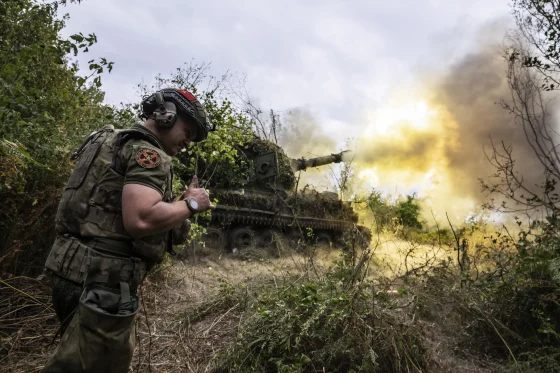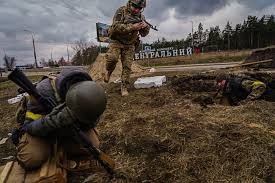Russian forces have initiated a counteroffensive in the Kursk region to dislodge Ukrainian troops who crossed the border five weeks ago, Ukrainian President Volodymyr Zelenskyy announced Thursday. This development marks a significant shift in the ongoing conflict, as Russian territory has been under foreign occupation for the first time since World War II.

The Russian Defense Ministry reported recapturing 10 settlements in Kursk but stopped short of labeling the operation a counteroffensive. President Zelenskyy acknowledged Russia’s “counteroffensive actions” but assured that Ukrainian forces had anticipated and prepared for such moves.
Ukraine’s bold incursion into Kursk, launched on August 6, was partly aimed at forcing Russia to divert troops from Donetsk in eastern Ukraine, where Russian forces have been making steady advances. The cross-border operation also served to boost Ukrainian morale after months of challenging news from the front lines, exposing Russian vulnerabilities and allowing Ukraine to seize some initiative on the battlefield.
The delay in Russia’s response suggested that Moscow was caught off guard by the incursion. Assembling forces for a counterattack proved challenging due to the vast distances involved and ongoing commitments along the 1,000-kilometer (600-mile) front line.
Meanwhile, the conflict continues to exact a heavy toll. A Russian missile attack on Thursday killed three Ukrainian workers with the International Committee of the Red Cross and injured two others, according to Ukraine’s Human Rights Ombudsman, Dmytro Lubinets. This marks the largest loss of life for the Geneva-based organization since a 2020 bomb blast in Yemen.
In eastern Ukraine, the key city of Pokrovsk is facing a humanitarian crisis. Governor Vadym Filashkin reported that recent fighting has left the city without drinking water and natural gas for cooking and heating. More than 20,000 people have fled in the past six weeks as Russian forces approach residential areas, leaving about 18,000 residents, including 522 children.

The situation in Pokrovsk underscores the broader challenges faced by Ukraine. As a main defensive stronghold and key logistics hub in the Donetsk region, its potential capture would significantly compromise Ukraine’s defensive capabilities and supply routes.
International support continues to play a crucial role in Ukraine’s resistance. The United States and Britain pledged nearly $1.5 billion in additional aid during a recent visit by their top diplomats to Kyiv. Much of this aid is earmarked for restoring Ukraine’s battered electricity supply, which has been a frequent target of Russian missile attacks.
As the conflict evolves, debates persist about the use of Western-supplied weapons. Ukraine has expressed frustration over restrictions on using sophisticated modern weapons to strike targets inside Russia, fearing escalation. However, recent reports of Iran supplying ballistic missiles to Russia could potentially change these rules of engagement.
The ongoing conflict continues to impact civilian life and infrastructure across Ukraine. An overnight drone attack on Konotop in the northern Sumy region disrupted the electricity supply and caused significant damage to windows and tram tracks.
As both sides adjust their strategies, the international community watches closely. The counteroffensive in Kursk represents not only a military development but also a potential shift in the broader dynamics of the conflict, with implications for regional stability and international relations.



